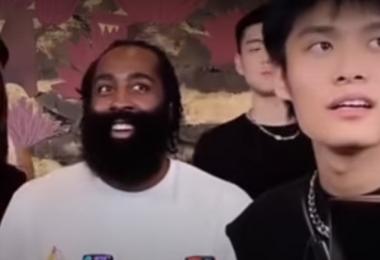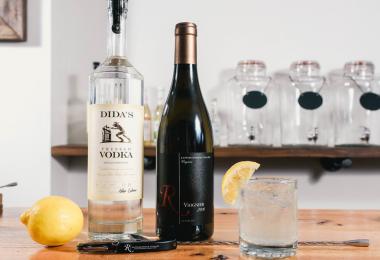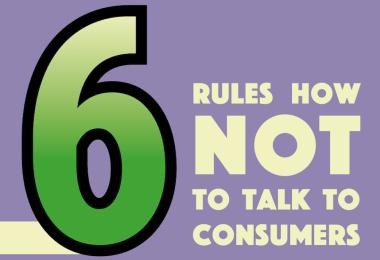Many trade shows promise but don’t deliver. Industry events in Las Vegas can be swamped with drunk people, while others are more focused on spirits rather than wine. So here is a short lineup of some of the best trade shows for foreign producers aiming to make contacts to open up or expand their US market presence.
Fortunately, a handful of experienced wine brokers and consultants are available to make the process easier. Most of them charge a monthly retainer in addition to a sales commission that can range from 3-10% depending on the cost of the wine.
Some of the best wine shows are under the radar and are less expensive ways to market wines to key US importers, operators and distributors. This story will highlight two lesser-known trade conferences in California and offer information on how to maximise attendance value – in terms of both time and cost – at the Aspen Food & Wine Classic in Colorado.
The three opportunities highlighted in this story are the January Direct to Consumer (DtC) Wine Symposium held outside San Francisco; the March LuxeSF Wineries Boot Camp in Napa; and the insider trade track to visiting Aspen Food & Wine in June without paying expensive show-floor fees.
Choosing a show
Producers in attendance at all three of these shows said they not only produced a return on the investment but significant return on hours. Almost all of them said new and thought-provoking data and networking opportunities – all of which would be equally useful for European winery executives – were the two top reasons they attended. All said the contents of the programs inspired them to do business differently. Several also made direct hires from people they met there.
“If I am paying to go to a conference and walk away with three ‘a-ha solutions’ I consider that a win,” says Toby Trevarthen, the founder and chief narration officer at Spatial Shift in Napa, which designs marketing narratives for organisations. He also runs an urban culinary collective where guests come in and cook, called Kitchen Collective.
The Food & Wine festival in Aspen in June is a three-day consumer event that’s been a key destination for chefs, food and wine personalities and wine producers since 1978. Most attendees, however, don’t know that there is separate trade track that is much less expensive and solely focused on networking with key trade buyers, chefs and somms.
Trade passes are available to restaurateurs, and producers accompanying them, for the same fee as consumer passes: currently $1,700. They include many more perks and greater access to buyers in non-consumer settings. Benefits include a two-day trade program plus access to trade-focused panels and events. These include cooking demonstrations, wine tastings and the Grand Tasting Pavilion, which hosts private trade tastings throughout all three days of the event.
The even less expensive, and more intimate way to make use of the show is to book lodgings and completely avoid the consumer events. Rented homes and hotel suites throughout Aspen are used as networking bases for all the national US importers, wholesalers, chefs and wine buyers. Entrance is free if you know where to go and this trade-only segment is patronised by top decision-making buyers.
This is not a part of the show that organisers publicise, nor is it easy to discover. Smart producers and other executives can reach out to their importers and distributors ahead of time to find out where these events will be hosted and where large groups of wholesalers will be staying. If wineries don’t currently have those connections, they would benefit from attending the trade portion of the event to in order to make them.
Which show?
Convenience is one of the main reasons why many wine executives attend these shows. Choosing the right wine show all comes down to “a combination of content, location and dates that don’t conflict with other obligations,” says Susan Winchester, the Orinda, California-based president of Brydges Beverage Consulting.
Chris Chandler, executive director of the 45-member Livermore-based Livermore Valley Winegrowers Association, said: “Trade shows are selected based on the programming/agenda; cost/value and proximity; time of year and my interest and availability to attend.” As the executive director of a regional wine association, he says, “I look for insight information that can be shared and used by our staff and membership.”
Lauren Ackerman, the owner of the Napa-based Ackerman Family Vineyards, says that she chooses which to attend based on value to the company brand, price, timing and location. “The insights on data are the primary reason we attend specific shows,” she added. “As a small brand, we are very choosy and particular about which shows merit our attention, so we only pick the one that has the most relevance to us. We also don’t want to travel too far away because of the cost and time.”
She advises would-be attendees to identify their goals and base them on return on investment. “Don’t go to anything that doesn’t provide real value in terms of new data, new concepts or information on changing trends,” she says. “Sometimes these conferences are more geared to new employees versus senior executives looking for current data and trends. Know what you need to learn in advance.”
Damien Wilson, a professor at the Wine Business Institute at Sonoma State University in Rohnert Park, California, says that he tries to sort out if the conference is sufficiently wine business-focused and will give him enough opportunities to speak, learn and recruit new talent for the university.
The LuxeSF Boot Camp
The LuxeSF Wineries Boot Camp has long been an under-the-radar event created by the executive director of the Bay Area’s various luxury networking organisations. It brings together executives in various high-end industries. Held in Yountville, California in March each year, it’s an event that “checks a lot of the boxes,” said Chandler of the Livermore Valley Winegrowers Association. “It is a one-day commitment, packed with current and useful material.” Ackerman says the Luxury Council event “is top on our list because they bring new data on the luxury goods market each year that is relevant to our strategic planning”.
The Boot Camp’s chairman and founder, Sausalito-based Alf Nucifora, says his organisation’s mission is offering sales executives an eclectic program focused on “trends, challenges, opportunities and future issues that will affect the industry”. The program costs about $70 a head and is attended by 300 guest and more than 100 wineries.
Trevarthen of Spatial Shift said several of this year’s sessions inspired him to work differently. One that compared the cognitive versus emotional capacities of the brain when tasting motivated him to try to evoke a greater sense of purpose in his corporate messaging. The session on hiring good staff got him thinking about how to up his game on chefs for his collaborative cooking business, he says.
Left: Lauren Ackerman, Ackerman Family Vineyards Top Right: Chris Chandler, executive director at Livermore Valley Winegrowers Association Bottom Left: Alf Nucifora, chairman and founder of the LuxeSF Wineries Boot Camp
Competitive and thought-provoking data keeps Tracy Sweeney, vice-president of cellar doors and employee stores at the Napa-based Treasury Wine Estates, coming back to the Boot Camp. “The completive mix of data and speakers allows me to mine data and stay abreast of it.” She has also hired many people she has met at the conference.
The data, content and networking opportunities offered at this and the other two conferences would no doubt be of great use to overseas producers entering the US market or looking to expand their presence. The small size and affordable ticket prices for all three can help amortise travel costs when combined with other planned market visits.
The DtC conference
About 90% of the attendees of this mid-size conference include director to consumer (DtC) managers, sales and marketing managers, wine club managers, or tasting room managers, according to Napa-based Benson Marketing, which organises the conference. Sessions on content, data and networking continue to draw international wine executives. In 2018, attendees hailed from 15 different states and four countries.
The handful of Canadian producers that were present at this year’s conference shared what they appreciated about the show. “The speakers talk to the best practices,” said Sara Triggs, sales and marketing manager of the Culmina Family Estate Winery in the Okanagan Valley in British Columbia. She added that the information offered had been valuable and that “there is enough sessional variation that attendees can pick and choose” those most relevant to them.
Another Canadian producer added that the show is worth attending as it offers foreign producers a chance to “be a part of the leading American wine regions”. Ryan Andrews, sales manager at Summerhill Estate Winery in the Okanagan region, added that learning about trends identified at the conference was valuable and may help foreign producers better understand what the future of wine sales and marketing will look like.
In the end, the decision to attend these shows or not has to be based on whether the information and networking offered is valuable. For producers looking to understand the US market from the inside, the answer is probably yes.
Liza B. Zimmerman
This article first appeared in Issue 2, 2019 of Meininger's Wine Business International








